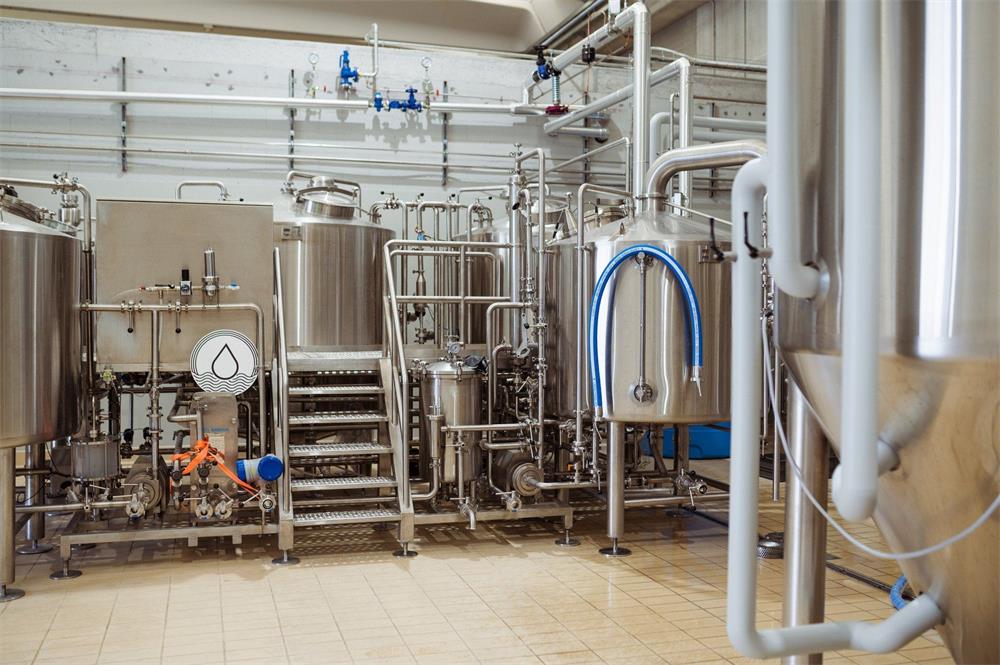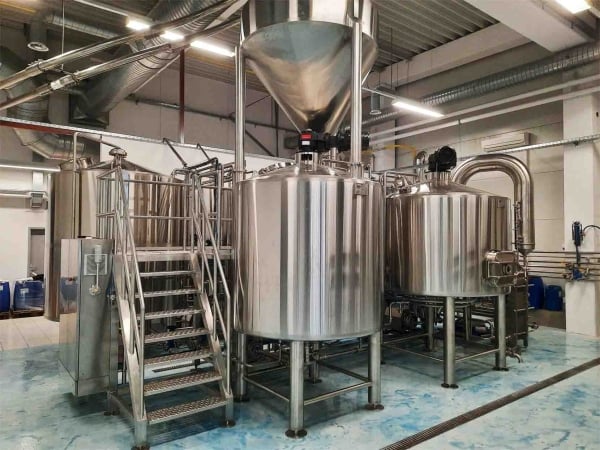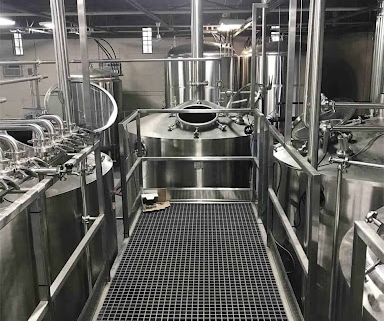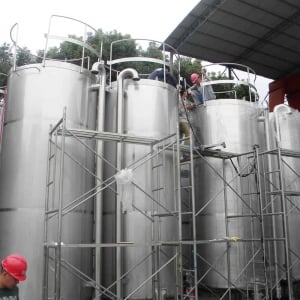Electric Brewing Equipment
When it comes to brewing your own beer, the type of equipment you choose can make or break your experience. Whether you’re a homebrewing enthusiast or planning to scale up your operations, electric brewing equipment offers some serious advantages. Not only is it more energy-efficient, but it also provides more control over the brewing process, letting you fine-tune every detail.
But with so many options out there, choosing the right setup can be daunting. This guide will walk you through everything you need to know about electric brewing equipment, from equipment types and customization options to the brewing process and more.
Overview of Electric Brewing Equipment
Electric brewing systems have become a staple in both home and commercial brewing due to their precise temperature control, safety, and ease of use. Unlike traditional gas systems, electric brewing eliminates the risk of open flames and provides a more eco-friendly option. Whether you’re brewing in your garage, kitchen, or a professional brewing space, electric systems are versatile and can be tailored to your specific needs.
Key Advantages of Electric Brewing Systems
- Temperature Precision: Electric systems allow for highly accurate temperature control, crucial for achieving the perfect brew.
- Energy Efficiency: Compared to gas-powered systems, electric setups are generally more efficient and sustainable.
- Safety: Electric systems eliminate the risk of open flames, making them safer for indoor use.
- Customizability: From size to automation features, electric brewing systems offer various customization options to suit different brewing scales.
Challenges to Consider
- Initial Investment: Electric systems can be pricier upfront compared to traditional gas systems.
- Learning Curve: If you’re new to electric brewing, there may be a bit of a learning curve, especially with more advanced systems.
Now, let’s dive deeper into the nitty-gritty details of the equipment you’ll need.
Electric Brewing Equipment Guide
Electric brewing equipment can be categorized based on the scale of brewing (home, small batch, or commercial), the level of automation, and the specific components you require. Here’s a breakdown of what you’ll typically find in an electric brewing setup.

Essential Components of Electric Brewing Systems
Each electric brewing system comes with key components that work together to create your perfect brew. Let’s walk through the fundamental pieces of equipment and their roles.
Mash Tun
The mash tun is where your grains are steeped in hot water, converting starches to sugars, which are essential for fermentation. Electric systems often include an electric heating element in the mash tun, allowing you to maintain precise temperatures throughout the process.
Boil Kettle
Once your grains have been mashed, the wort (unfermented beer) is transferred to the boil kettle. An electric boil kettle uses an internal heating element to bring the wort to a boil, where hops and other ingredients are added.
Fermentation Vessel
After boiling, the wort is cooled and transferred to a fermentation vessel, where yeast is added. Some electric systems come with built-in cooling systems for this step, making the process more streamlined.
Heating Elements
The heating element is one of the most important parts of your electric brewing system. It provides the heat necessary for both the mashing and boiling processes. Higher-end systems offer more precise control over the heating element, which can be a huge advantage when brewing different beer styles.
Control Panel
This is the brain of your electric brewing system. The control panel allows you to set and monitor temperatures, timers, and other aspects of the brewing process. Some advanced systems even offer Wi-Fi connectivity, allowing you to control your brew from your smartphone.
Electric Brewing Equipment Types
When it comes to electric brewing systems, you have several options depending on your brewing goals, available space, and budget. Here’s a comparison of the most common types of electric brewing systems.
| System Type | Capacity | Best For | Price Range | Customization |
|---|---|---|---|---|
| All-in-One Systems | 5-10 gallons | Homebrewers | $300 – $1,000 | Limited |
| Modular Systems | 10-30 gallons | Advanced Homebrewers | $1,000 – $5,000 | Moderate |
| Commercial Systems | 30+ gallons | Microbreweries | $5,000+ | Extensive (Fully Customizable) |
The Brewing Process Using Electric Equipment
Brewing beer with an electric system follows the same fundamental process as traditional brewing but with added convenience and precision. Here’s an overview of the electric brewing process, step by step.
1. Mashing
Mashing is the first step in brewing, where malted grains are mixed with water in the mash tun. With electric brewing systems, you can maintain a consistent temperature for the perfect enzymatic reaction, turning starches into sugars. This process typically takes between 60 and 90 minutes.
2. Lautering
Once mashing is complete, the wort is separated from the grain husks. Electric systems often come with built-in pumps to simplify this process, moving the wort from the mash tun to the boil kettle.
3. Boiling
The next step is boiling the wort, which helps to sterilize it and extract flavors from the hops. In electric brewing, the boil is powered by a heating element inside the kettle. The boil usually lasts 60 to 90 minutes, during which hops are added at various stages.
4. Cooling
After boiling, the wort needs to be cooled before fermentation. Some electric systems come with integrated cooling systems, making this step more efficient.
5. Fermentation
The cooled wort is transferred to a fermentation vessel, where yeast is added. The vessel’s temperature can be precisely controlled in electric systems to ensure optimal fermentation conditions.
6. Bottling or Kegging
Once fermentation is complete, the beer is either bottled or kegged. Some electric systems offer add-ons that simplify the packaging process.
Choosing the Right Equipment Based on Capacity, Space, and Design
The best electric brewing equipment for you will depend on your brewing goals, available space, and design preferences. Here’s a table that helps you compare the options.
| Factor | Small Homebrew Setup | Large Homebrew Setup | Commercial Brewery Setup |
|---|---|---|---|
| Capacity | 5-10 gallons | 10-30 gallons | 30+ gallons |
| Space Required | Kitchen/Garage-Friendly | Dedicated Brewing Space | Large, Dedicated Brewery Area |
| Design | Compact, Simple | Modular, Customizable | Fully Customizable, Complex |
| Customization Options | Minimal | Moderate | Extensive |
Electric Brewing Equipment Suppliers and Price Range
Finding the right supplier is crucial when purchasing electric brewing equipment. Whether you’re looking for a budget-friendly system or top-of-the-line commercial-grade equipment, here are some suppliers and their price ranges.
| Supplier | Equipment Type | Price Range |
|---|---|---|
| Anvil Brewing Equipment | Homebrew Systems | $500 – $1,500 |
| Spike Brewing | Homebrew/Commercial | $1,500 – $10,000+ |
| Ss Brewtech | Homebrew/Commercial | $1,000 – $15,000+ |
| Blichmann Engineering | Homebrew/Commercial | $1,000 – $20,000+ |
| PicoBrew | Compact Homebrew Systems | $300 – $1,200 |
Installation, Operation, and Maintenance of Electric Brewing Equipment
Once you’ve chosen your equipment, it’s essential to understand how to install, operate, and maintain it to ensure a smooth brewing process.
| Aspect | Details |
|---|---|
| Installation | Ensure proper wiring for electric systems, consult with a professional if necessary. |
| Operation | Familiarize yourself with the control panel and features of your system. |
| Maintenance | Regularly clean and inspect the heating elements, control panel, and pumps to ensure efficiency. |
How to Choose the Right Supplier for Electric Brewing Equipment
Selecting the right supplier is essential to ensure you get quality equipment that meets your brewing needs. Here’s what to look for.
| Factor | Details |
|---|---|
| Reputation | Research reviews and testimonials from other brewers. |
| Customer Service | Ensure the supplier offers good post-purchase support. |
| Customization Options | Choose a supplier that offers flexibility in system design. |
| Warranty and Support | Look for suppliers that provide warranties and easy access to replacement parts. |
Electric Brewing Equipment: Advantages and Limitations
While electric brewing systems come with plenty of benefits, they also have some limitations. Here’s a breakdown.
| Advantages | Disadvantages |
|---|---|
| Temperature Precision | Higher upfront cost compared to traditional gas setups. |
| Energy Efficiency | Can be difficult to scale beyond a certain size without increased complexity. |
| Safety | Some systems require professional installation. |
| Eco-Friendly | Limited by available power sources in some locations. |

FAQ
| Question | Answer |
|---|---|
| Is electric brewing equipment better than gas systems? | It depends on your brewing goals. Electric systems offer more precision and safety, but gas systems can handle larger batches. |
| Can I brew commercially with electric systems? | Yes, many microbreweries use electric systems for small- to medium-scale production. |
| How much does electric brewing equipment cost? | Prices range from $300 for homebrew setups to $20,000+ for commercial-grade systems. |
| What’s the best brand for electric brewing equipment? | Brands like Spike Brewing and Ss Brewtech are known for their high-quality, customizable systems. |
Conclusion
Electric brewing equipment has revolutionized the beer-making process by offering unparalleled control, safety, and efficiency. Whether you’re a hobbyist looking to brew in your garage or a professional setting up a commercial brewery, there’s an electric brewing system out there that fits your needs. By understanding the key components, comparing options, and selecting the right suppliers, you can set yourself up for brewing success.













